Moon conceptually and physically challenges the commonplace notion of the architect and architecture. Never seen wearing black apparel like the majority of his Starck-esque colleagues, he prefers a red-hot F1 bodysuit. The son of a geologist, he grew up near a coal mine in Jeongseon, in the eastern part of the peninsula near Pyeongchang. Later he moved to Tasmania, following a complex formative itinerary thanks to his scientist father. He recalls observing the sublime and impressive sight of extracted coal falling from a conveyer belt into a vast, musky space where bright sunlight filtered through slits in the slate roof. Gastronomically speaking, he sketched out diverse architectural references in his diary from 1986 to 2010, describing an "Architectural dinner: my primary diet dish with psychedelic drink included". With intentional misspelling and wordplay, a list of gastronomic ingredients reads like a recipe for a Korean bibimbap: visionary architects sauce, Jean Nouvel na, OMA dear, Lebbeus Woods ter, Meier sauce, Piano + Rodgers spice, Ando Tadao shi, Le Corbu sauce, contemporary fashion spice, Barragan, hanok, BIG, etc.
1.jpg.foto.rmedium.jpg)
Titled Beyond the Opposite, his project proposed a parasitical structure on the pre-existing Dongho Bridge over Seoul's Han River. At this time Moon was fully immersed in Hinduism and Indian philosophy, but he also admired the architecture of Tadao Ando and Lebbeus Woods. He was fascinated by the landscape of Varanasi, where sacred and profane, life and death, cremation and bathing coexist. This state of commixture is also reminiscent of an aphorism by Korean intellectual Jiha Kim, known as Ddong Bada ("An excremental ocean"), it praises faeces as a sincere manifestation of the human life cycle: from meal to shit, then to soil, then from meal to shit again, in an eternal recurrence. He gave his project hybrid and multiple functions, including a crematorium, love hotel, suicidal bridge, night club and, last but not least, an antenna on the summit for theosophical contact with unknown beings. Furthermore, this project proposed an idea of temporal synchronicity in which diverse dimensions of multi-realities, archaic symbolisms and plausible futures coexist. Unfortunately, Professor Charles Correa despised most of Moon's academic projects and even tried to dissuade him from becoming an architect. Having barely graduated, Moon had a hard time finding a job since no one would write him a letter of introduction.
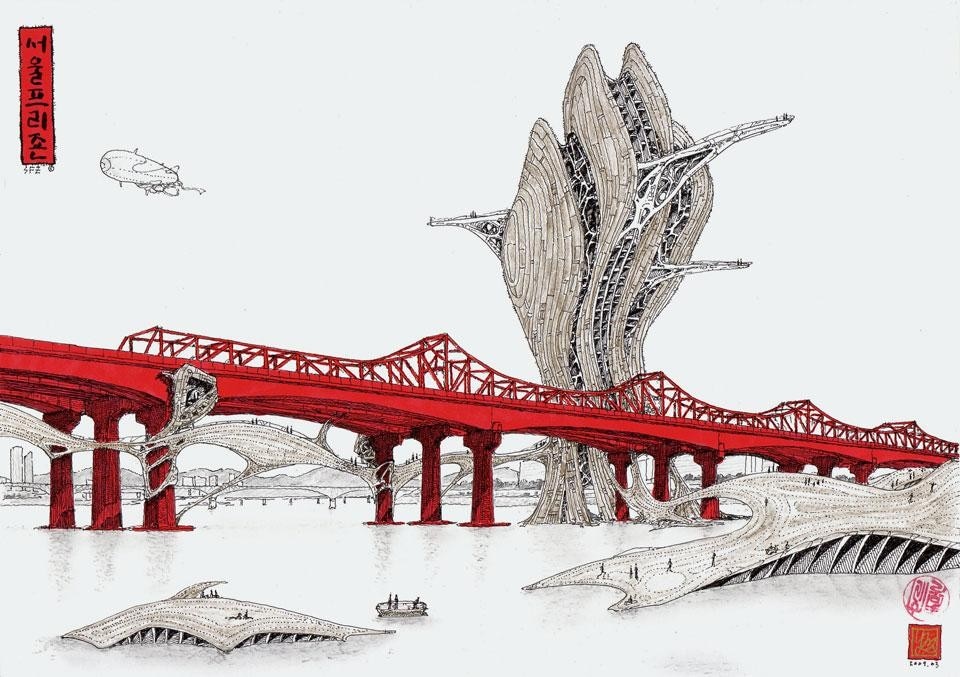
Drawings are like a mediating medium to acknowledge and auto-suggest that a possible world could be realised, through fragments of thoughts that compose a momentarily different "other" reality. Like a buffer zone, these drawings let a person refuse obsessions of success, wealth and fame. In the ancient oriental painting Murungdowon ("Oneiric Peach Field Amusement"), drawing is not a utopia of withdrawal but a containment of aspiration with multiple points of tangency with what is real. Hence drawing becomes a medium of meditation and mediation marked by daily instinct, reconciliation and delayed pleasures.
Never seen wearing black apparel like the majority of his Starck-esque colleagues, Moon prefers a red-hot F1 bodysuit
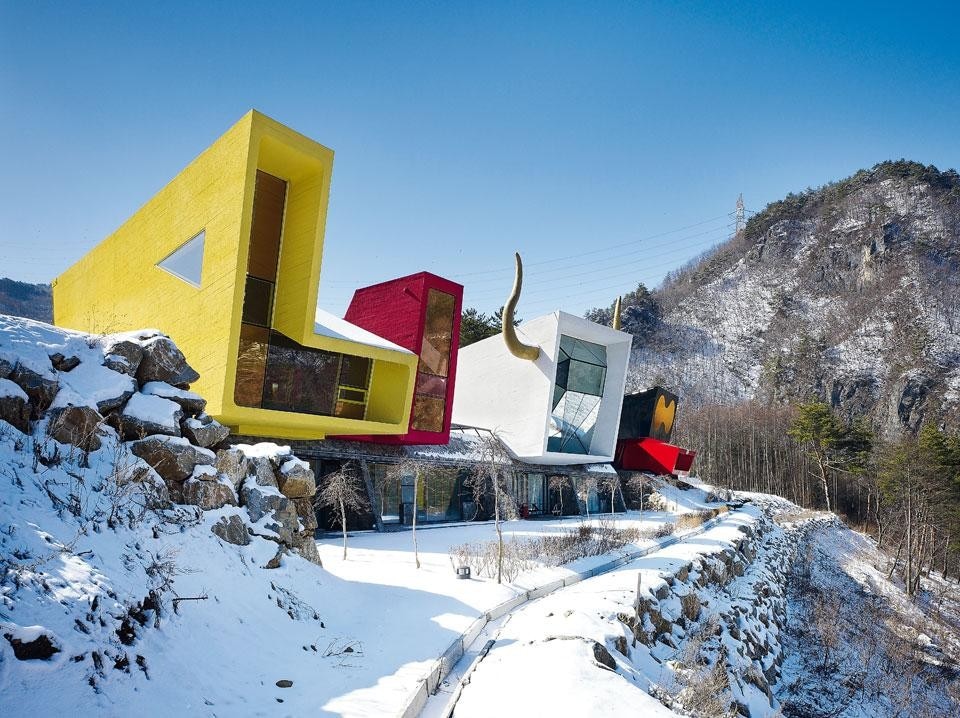
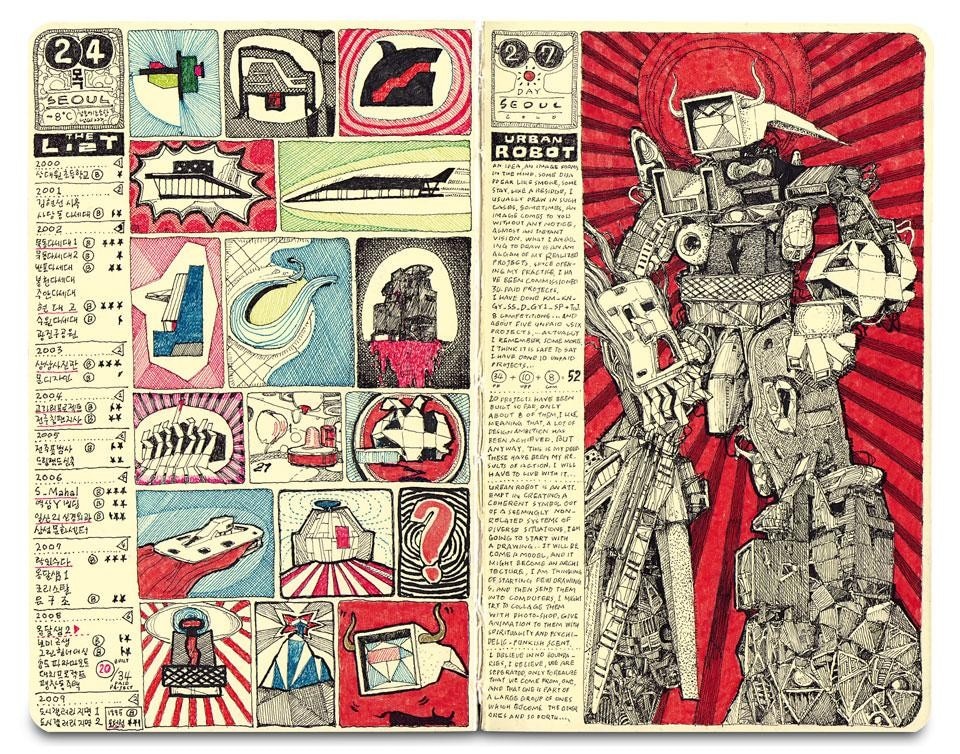
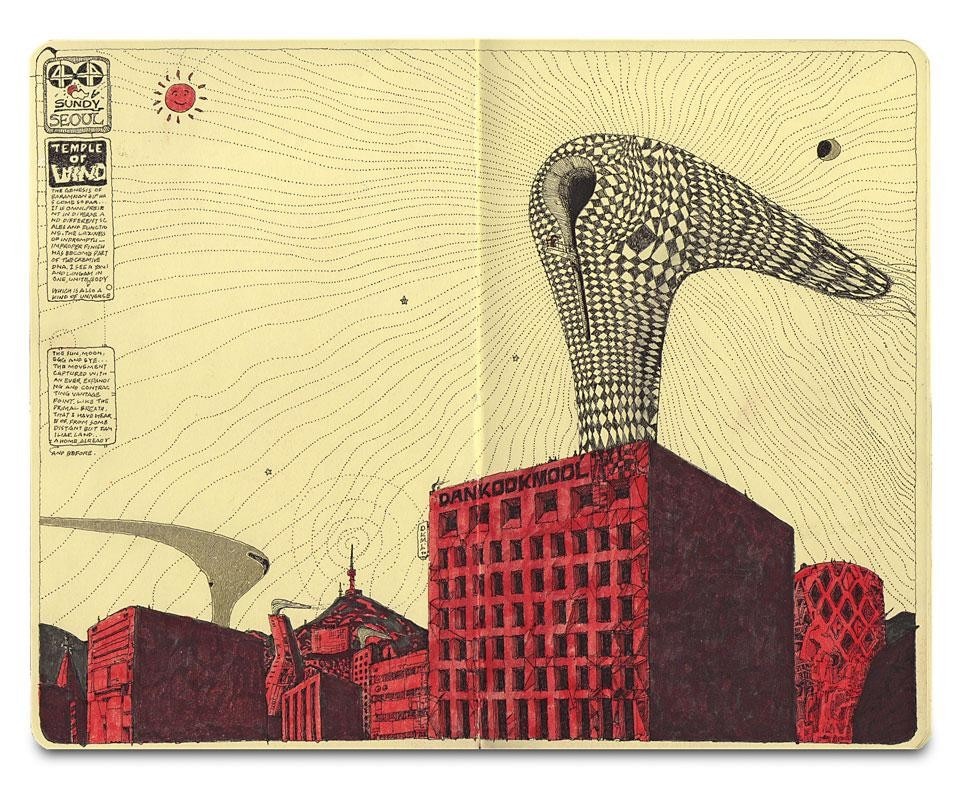
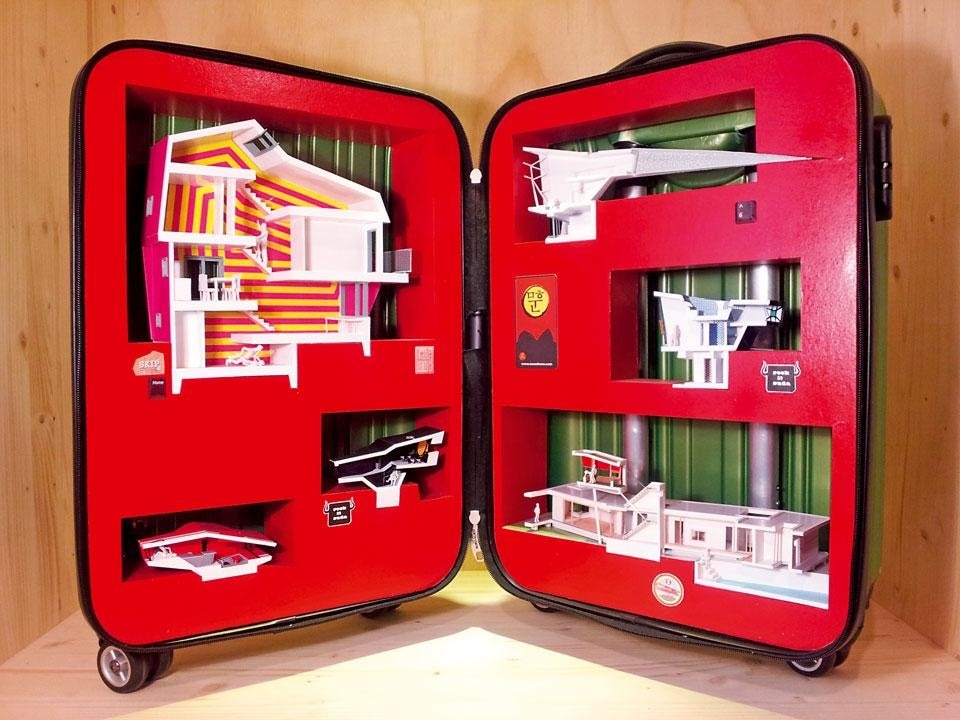
His favourite part of the building is the thematic area dedicated to Spanish blue, an architecture with horns or, better yet, an architecture "wearing the horns". A building with a pair of horns is indeed exceptional, with the only precedent perhaps being the Palace of Knossos. "The moment I mounted those giant horns on the walls, I felt as if the entire structure had come alive," says Moon. "I'm intrigued by virtual space. I like to think of buildings hovering above the ground, flying around. Take a look at the nets and hammocks I've installed inside these structures—I call them 'softies' or 'action architecture'. They have a great potential for movement, interaction, evolution." Recently he had a chance to show his work in a collective exhibition in Japan. Six sectioned models were prepared in a suitcase with miniatures of couples in Kama Sutra poses. It took him two seconds to prepare his booth while others struggled for an entire day, giving him free time to visit the AV shop nearby and catch up on the latest. Ilhyun Kim, Associate professor at Kyung Hee University, Korea


